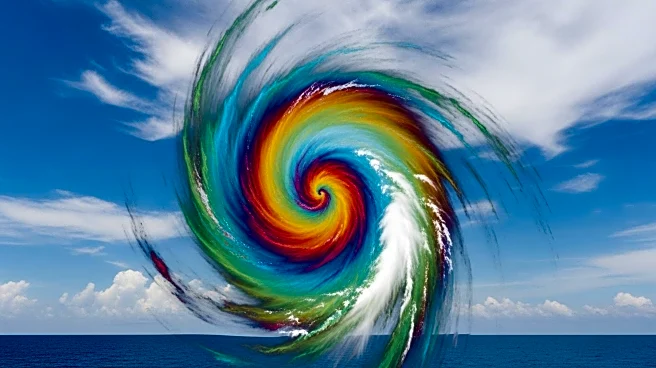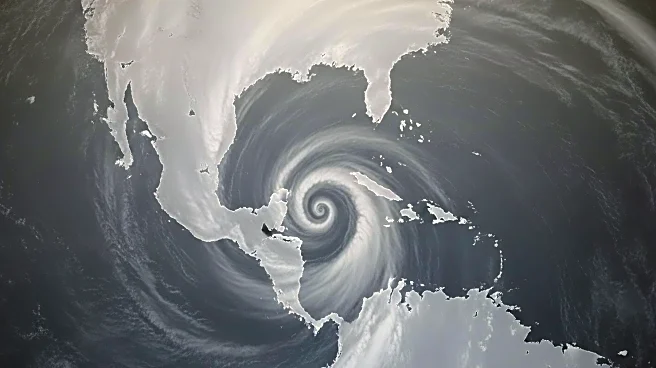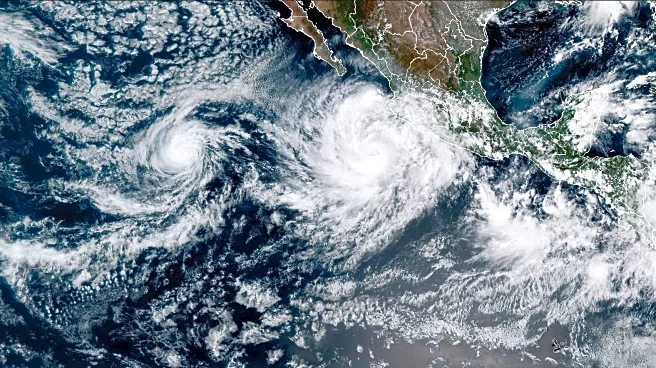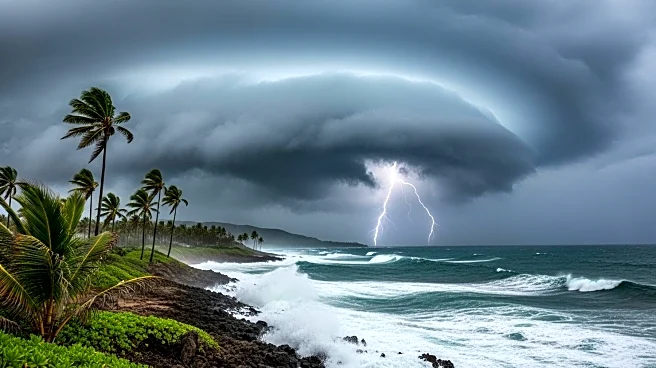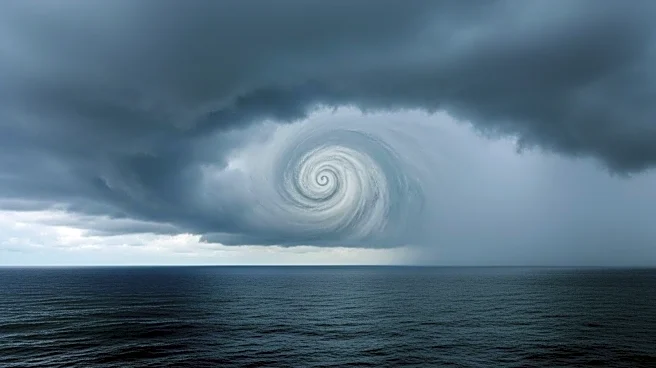What's Happening?
Tropical Storm Jerry has formed in the eastern Atlantic Ocean and is projected to become a hurricane as it approaches the northern Leeward Islands by late Thursday. The storm is expected to bring heavy rain, gusty winds, and rough seas to the region. However, current forecasts suggest that Jerry will veer out to sea before impacting the United States. Meanwhile, a separate nontropical storm is anticipated to develop near the Southeast coast later this week. This storm could bring significant rain, wind, and wave-related impacts to the Carolinas and Virginia, potentially exacerbated by higher tides due to this week's supermoon. The storm may meet subtropical criteria and be named Karen if it develops as expected.
Why It's Important?
The development of these storms is significant as they pose potential threats to the U.S. Southeast coast and the northern Leeward Islands. While Jerry is expected to miss the U.S., the nontropical storm could cause damaging winds and beach erosion in the Carolinas and Virginia. This situation highlights the ongoing vulnerability of coastal regions to severe weather events, which can lead to economic disruptions and necessitate emergency preparedness measures. The potential for the storm to become subtropical and earn a name underscores the complexity and unpredictability of weather systems during hurricane season.
What's Next?
The track and intensity of the coastal storm will become clearer in the coming days, with several scenarios possible, including significant regional impacts if the storm develops near the Carolinas. Residents in the northern Leeward Islands and possibly Puerto Rico should remain vigilant as Jerry approaches, with a close pass from a Category 1 hurricane possible. Additionally, Bermuda may need to monitor Jerry's path over the weekend. The broader hurricane season remains active, with the potential for more storms to form in October, particularly in the Caribbean Sea, where conditions are favorable for cyclone development.
Beyond the Headlines
The potential formation of more storms later in October is linked to the Madden-Julian Oscillation, a global weather pattern that enhances tropical cyclone formation. This highlights the interconnectedness of global weather systems and the importance of monitoring such patterns for better storm prediction and preparedness. The high ocean heat content in the Caribbean Sea could fuel strong storms, emphasizing the need for ongoing research and investment in climate resilience for vulnerable regions.

